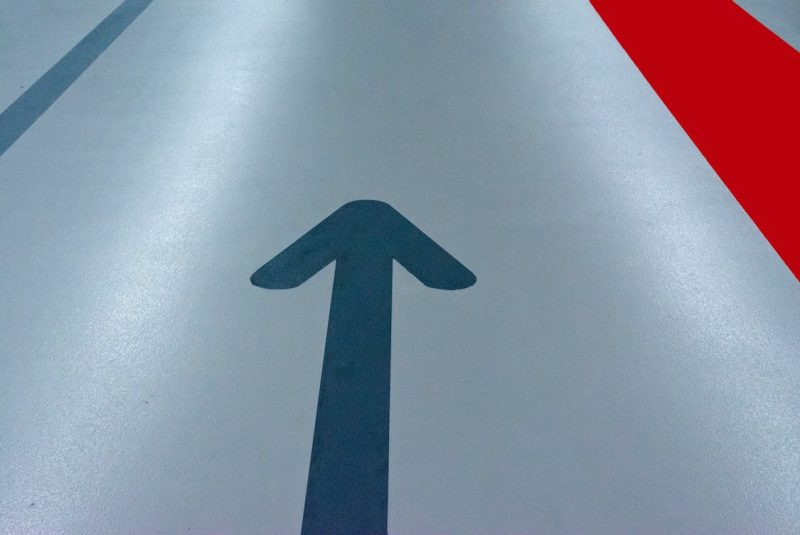In busy places like airports, stadiums, or shopping malls, finding your way around can sometimes feel overwhelming. Linemarking helps by creating clear visual guides that direct people where they need to go without confusion.
From walkways to parking areas, these markings make navigation smoother, safer, and far less stressful for everyone.
Introduction to Linemarking
Linemarking refers to the process of applying paint or other materials to surfaces to create lines and symbols. Commonly seen in parking lots, roads, and sports fields, linemarking serves a vital function in large public spaces.
By providing clear visual cues, it significantly enhances navigation for pedestrians and vehicles alike.
The Importance of Clear Signage
In bustling environments such as airports, shopping malls, and parks, clarity is paramount. Linemarking provides an effective way to guide individuals in these expansive areas.
A well-marked path can lead to increased safety and efficiency, helping people reach their destinations without confusion.
Types of Linemarking
Linemarking can take various forms, each tailored to specific needs. For example, pedestrian pathways are often painted in bright colors to ensure visibility.
On the flip side, vehicle lanes utilize more subdued tones, clearly demarcating space while maintaining an orderly flow of traffic. This variety in approach caters to different audiences, enhancing navigation for everyone involved.
Enhancing Safety
Safety is a major concern in large public spaces. Linemarking contributes significantly to reducing accidents. For instance, clear crosswalks guide pedestrians across busy roads, signaling to drivers to stop.
This simple yet effective method of communication can save lives and prevent injuries, fostering a safer environment for all.
Aesthetic Considerations
Beyond functionality, linemarking can also add visual appeal to public spaces. Artistic designs, colors, and patterns can create a more inviting atmosphere.
In parks or recreational areas, playful linemarking can engage families and children, encouraging them to explore. Thus, linemarking not only serves a practical purpose but also enhances the overall experience.
Guiding Traffic Flow
Efficient traffic flow is crucial in high-density areas. Linemarking helps establish lanes, parking spaces, and no-stopping zones.
For businesses and facility managers aiming to create safer, more organized parking areas, investing in professional car park line marking in Brisbane can ensure long-lasting, highly visible results.
This clear delineation prevents congestion and confusion, allowing vehicles to move smoothly. With designated areas, drivers are less likely to double-park or block pathways, leading to a more organized environment.
Supporting Accessibility

Linemarking plays an essential role in ensuring that public spaces are accessible to everyone. Clear markings for accessible parking spaces and pathways help individuals with mobility challenges navigate these areas without difficulty.
The thoughtful application of linemarking caters to diverse needs, ensuring inclusivity in public environments.
Environmental Considerations
Sustainability is increasingly important in urban planning. Linemarking can incorporate eco-friendly materials to minimize environmental impact.
Water-based paints or thermoplastic materials can reduce harmful emissions, making public spaces greener. Thus, linemarking not only enhances navigation but also aligns with broader environmental goals.
The Role of Technology
With advancements in technology, linemarking is evolving. Smart linemarking systems can incorporate LED lights or reflective materials, enhancing visibility at night.
These innovations not only improve safety but also help guide users with real-time information. As technology progresses, the future of linemarking in public spaces looks promising.
Customization for Different Spaces
Every public space is unique. Linemarking can be customized to suit specific needs or themes.
For example, a cultural district might feature linemarking that reflects local art or heritage. This level of personalization not only aids navigation but also enriches the community’s identity.
The Economic Impact
Investing in high-quality linemarking can yield economic benefits. Well-marked public areas attract more visitors, boosting local businesses.
In addition, clear navigation reduces the time spent searching for parking or directions, enhancing overall user satisfaction. A well-planned public space can lead to increased foot traffic and, ultimately, greater revenue.
Case Studies in Effective Linemarking
Looking at real-world examples reveals the impact of linemarking. Take major airports, where effective linemarking directs millions of travelers daily.
Clear signs and markings lead passengers to check-in counters, baggage claims, and gates swiftly. Similarly, city parks with designated pathways encourage safe exploration while maintaining an orderly environment.
Implementing Linemarking Best Practices
For successful linemarking, there are a few best practices to consider. First, regular maintenance is key to ensuring that markings remain visible.
Faded lines or symbols can lead to confusion and accidents. Second, engaging with the community can provide valuable insights on how linemarking can best serve their needs.
This collaborative approach often results in more effective navigation solutions.
Collaborating with Local Authorities
Partnerships with local authorities can enhance linemarking efforts. These alliances can ensure compliance with safety regulations and encourage the use of standardized practices across different public spaces.
By working together, communities can create a cohesive navigation system that benefits everyone.
The Future of Linemarking
As urban areas continue to grow, the relevance of linemarking will only increase. Future developments may introduce innovative materials or techniques, improving durability and visibility.
Additionally, integrating linemarking with digital navigation apps could offer users real-time guidance, further streamlining the navigation experience.
Educating the Public
Public awareness about the importance of linemarking can lead to greater respect for these systems. Educational campaigns can inform users about the significance of following marked pathways and signs.
When individuals understand the role of linemarking, they are more likely to engage with it positively, contributing to safer public spaces.
Linemarking is a fundamental aspect of navigation in large public areas, enhancing safety, efficiency, and aesthetics. Through careful design and implementation, communities can ensure these spaces are not only functional but also inviting.
The ongoing evolution of linemarking promises exciting developments, making public navigation smoother and more enjoyable for all.








